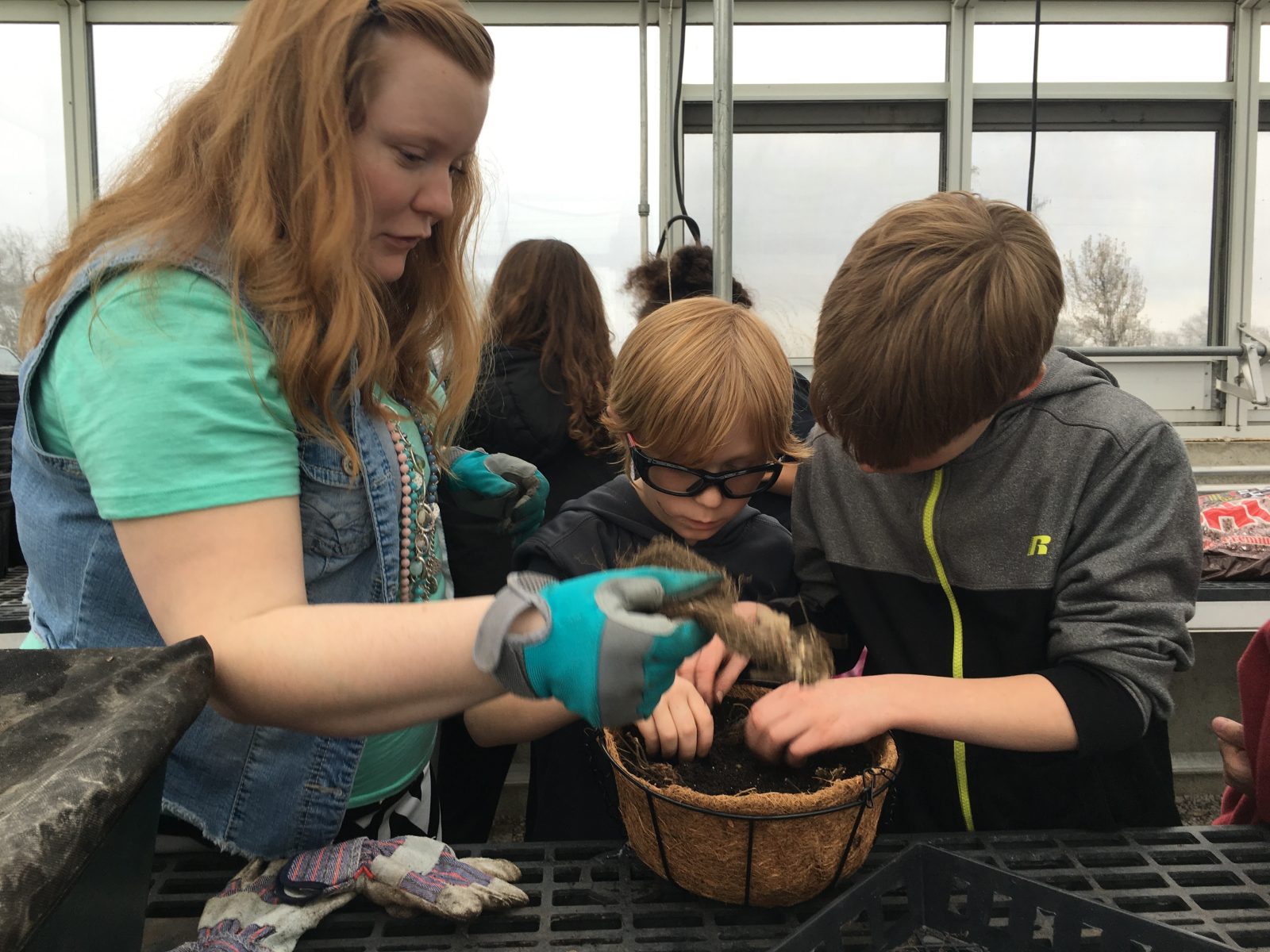What If I Know Nothing About Agriculture? Can I Still Use It In My Classroom?
Guest blogger, Marissa Morris writes about how she went from being "clueless" about agriculture, to being a pro at using it in her classroom! Get her tips, tricks and more!

By: Marissa Morris
I grew up in Kansas. I was surrounded by farms and animals my whole life, but when I started working in a charter school that mainly focused on agriculture - I was absolutely clueless.
In this post I will be discussing how important it is to teach your kids about Ag, and how I started!
Step 1: Finding the passion to teach ag
Why is agriculture important to my elementary students? Why should I be teaching Ag to them? And if it's important to them, should it be important to me? I think I asked myself these questions about 500 times when I first started.
I'm a passion driven teacher. I will really delve into a topic if it's something I truly care about. But at first, I wasn't all that interested in agriculture. Then I realized something, it didn't drive me, because I really didn't understand the importance of it. Luckily, I was surrounded by amazing teachers who guided me through what Ag is and why I should be passionate about it. I found my niche and the passion bloomed.
So why is it important for a general classroom teacher to teach Ag?
As an educator it is our job to give our students knowledge for the future. Typically we see this as reading/writing, math and science skills, which are all very important. But what about health? Food choices? Should our kids know where food comes from and how it's grown?
Of course!
Most teachers will cover this in a science class a few times a year, but students often leave school without knowing how important the job of a farmer is. How, without farmers, could the world be fed?
Farming is more than the planting of a seed and Old MacDonald. It's the future for our students. When we only discuss agriculture as an older man singing about his animals, the kids think it's silly and as they get older the subject isn't in their interests at all.
If we get our students outside planting, or doing hands-on activities they will spark an interest in agriculture. And when our students are interested they start to care and begin to see the effect agriculture has on their lives.
Step 2: How to start
Once you start to see the importance of this subject, you often ask yourself how to start. I know I did, and it's totally okay! Like I said, when I first started, I was clueless. I thought about agriculture and what topics of interest fit into that category.

Try: Cooking
Food, gardening, crops, farm animals, etc. For me, I started small. I love to cook, so why not teach about agriculture through cooking?
I would find different plants, or animals to study and then we would cook a dish once a month that incorporated the food item we learned about. It was easy for me because I was passionate about cooking. While you cook you can teach math and science too, so it was a win-win!
Try: Doing Research on Your State’s Ag Economy
Cooking isn't the only way to incorporate agriculture though. A coworker suggested that you do research on your state. You can look at crops, livestock and any business that deals with agriculture. After doing this you will have an abundance of information to bring to your students. Studying crops can teach about life cycles, economics, processing, producing and the list goes on. If you connect a student to something in their state it becomes important because it's familiar. When a subject is important they show interest and want to do more.
Try: Books, Ag Mags, or Journaling
I was able to attend the National Ag in the Classroom conference this year, where I learned about tons of great books! (My wish list is a mile long!) Our students need more than a story about a silly farmer, they need quality literature that incorporates the importance of agriculture. Picture books aren't just for the primary grades either. Middle school students feel nostalgic and excited when you read them a picture book. The best books have great lessons that are beneficial to all ages.
Most states also have Ag Mags available for any classroom to purchase. This is non-fiction material that they put into a newspaper format for students to learn about different topics. These little magazines are fantastic and you can find them over so many subjects!
You can also incorporate Ag into writing. This is one of my favorite ways to really dive into a subject. We start writing research papers in third grade, so having a monthly or bi-weekly topic for them to research and write about teaches them about Ag. When they discover something interesting and new about a pumpkin or a butterfly they are excited and want to keep learning! Journaling about nature, agriculture you may have at school, or science topics will also cover writing standards while teaching Ag.
Try: Internet Resources
The internet is full of great resources to help you with teaching agriculture.
The American Farm Bureau Foundation for Agriculture has a section just for teachers! One amazing thing that Farm Bureau offers is the Pillars of Agricultural Literacy. Each lesson on their site is aligned to a pillar. This is perfect for curriculum alignment and finding out exactly what your grade level should be learning about. The pillars give a lot of guidance, but are also broad enough that a lot of different things can be taught and still align with the pillars. This site even has a link to recommended publications to read to your students. This is my favorite place to find new, quality literature. I can trust that the books will be informative for my students.
I am also a fan of the National Agricultural Literacy Curriculum Matrix. This resource, found on the National Agriculture in the Classroom website, has a search engine that can be used to find hundreds of lessons on so many topics. You can type in just about anything you're wanting to teach and it will bring you whatever lessons or resources they have relating to that topic. You can even submit lessons you've created to be added to the matrix.
Most states also have an Ag in the Classroom website. On these websites you can find resources grouped by theme, holiday, or grade-level. I love that some of these sites plan Ag around thematic units. If you aren't sure what you want to cover in a certain month the sites will give you an idea of a theme related to that month. In October you may want to teach for several weeks about pumpkins, and using these sites you're able to find all of their pumpkin resources in one place.
Try: Finding Friends
Lastly, one of the best ways to start is to talk to other teachers also doing this. Finding a group to network with can be a lifesaver if you don't know what to do. Even the most educated Ag teachers in my building don't always know what to do, so we reach out to one another and collaborate. It's an important subject to teach, so we want to help and share so that others can do it too!
Finally: Just Try!
I hope you feel inspired to start your first lesson on agriculture. Our kids need to know where their food comes from!
I have created some Ag Brag Tags for you to use in your classroom when you want to brag on your students for working hard and doing their best while learning about ag!
Marissa Morris is a third grade teacher at Service Valley Charter Academy, an agricultural charter school, in Southeast Kansas. She has taught for 2 years after graduating from Pittsburg State University and loves teaching about environmental education and incorporating ag literacy into her lessons! She is passionate about hands on learning. Teaching at Service Valley has allowed her to combine that love with teaching the importance of nutrition, farming and our environment.
Marissa's Blog www.literatureandlaughter.blogspot.com










